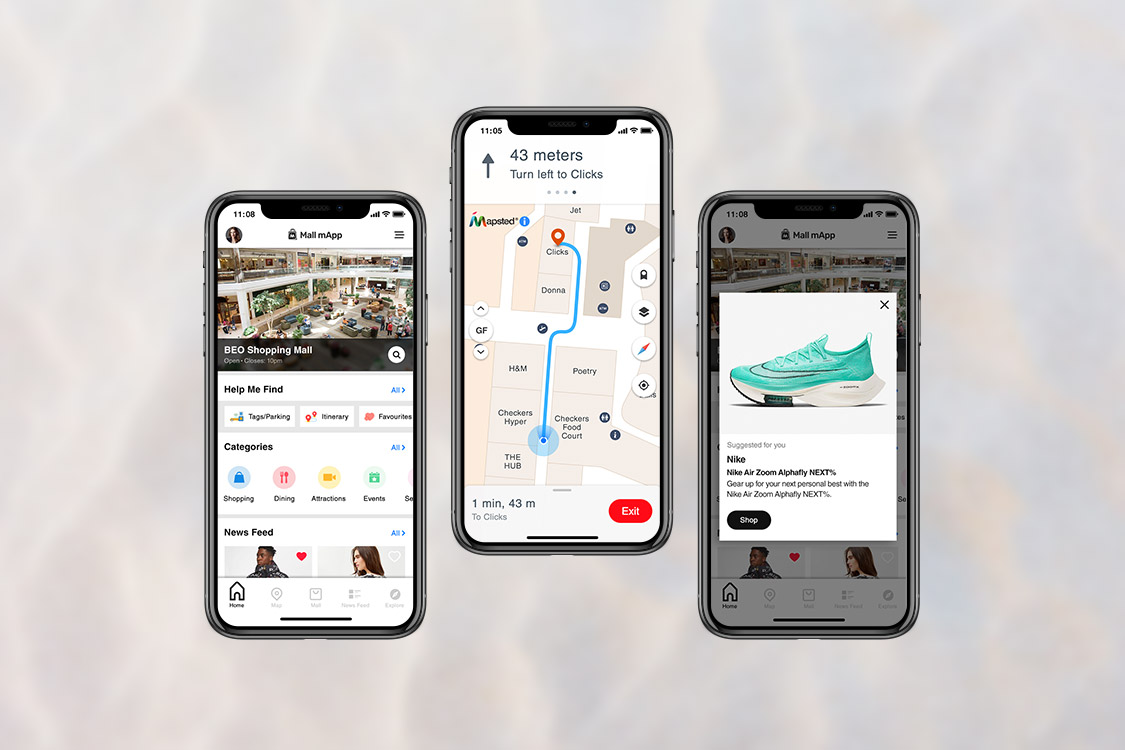Technology Trends

In the U.S. alone at least 3 out of 4 people now own a smartphone. And one study suggests that people touch their mobile devices more than 2,600 times a day on average. This suggests that the smartphones role in indoor positioning is significant.
Smartphones have completely changed our lives. They’re the last thing we see before we fall asleep, and the first thing we see when we wake up every morning. During the day, our devices bombard us with constant notifications from at least three email accounts, not to mention Twitter, Facebook, Instagram, WhatsApp, and Snapchat. Smartphones have become an everyday essential, some might even say borderline addiction, in today’s society.
But what do all those scrolls, swipes, and buzzes actually mean? Should we really worry about our smartphone usage? After all, Socrates once warned us that writing would “introduce forgetfulness” and make people “difficult to get along with.”


Attract and distract

Our smartphones capture our attention even when we aren’t using them. Just the presence of a smartphone can reduce the quality of conversations, according to a study done by Adrian Ward, an expert in technology and cognition at the University of Texas at Austin, and the author of a study called “Is your smartphone ruining your relationship?”
“The effect is biggest for people who rely on their phones the most,” said Ward. “The more you give it control over different things, social interactions, news, work, learning – the more addictive you become to this device”. Simply trying to resist that automatic attraction, Ward explained, takes up cognitive resources.
Smartphones can even compromise basic human decency. People can become so caught up in their devices that it can inhibit them from offering help to strangers on the street, reduce how much they smile at unfamiliar faces, and even make us less trusting of strangers, neighbors, and people of other religions or nationalities.
Balance

Finding balance with smartphone use is crucial. None of this is to say that these devices don’t have great practical and entertainment value. It’s harder to lose your way, but easier to find a date, and stay connected with long-distance friends. And in some ways, a greater diversity of people is at our fingertips. Apps like Bumble and Tinder allow people to easily connect with others outside their typical social networks. Occasional laughs from watching funny fail videos aren’t necessarily bad for us either.
Adam Gazzaley, a neuroscientist at the University of California, San Francisco says, “The crux of the problem is figuring out how to get all these amazing benefits of this globally interconnected world without abandoning the things that make us most human.” For Gazzaley, this means taking back control over how we use the technology. For example, turning off instant push notifications, not sleeping with the phone next to you, and switching the screen to grayscale to make it less attractive.
One pretty amazing benefit is that it’s now harder than ever to get lost outdoors because we always have access to GPS systems on our smartphones. Smartphones are shaping the future of navigation, and this is especially true for indoor navigation. Smartphone indoor positioning platforms are able to benefit both users and facility owners; users obviously have access to indoor GPS systems live and direct from their smartphone, and facility owners have the ability to market directly to the users and guide them to their stores.
So, while we may hear about how we use our smartphones way too much and that these devices will ruin our lives, in reality, when use is properly balanced, these devices actually improve the quality of our lives. Smartphones are providing us with features that we couldn’t have imagined, like global connectivity, indoor navigation, and augmented reality.
Today, Smartphones are allowing companies to maximize their revenue, and keep users informed with the latest information, and they’ve even changed the way we navigate indoors. Smartphone’s role in indoor positioning will only expand as more and more advanced technology becomes readily available.
Now that you know how vital smartphones can be to improving indoor positioning, we want you to take your time to explore Mapsted’s product which is designed with one goal – to improve the indoor experience for people. If you want a technology that outmatches all other competition, ring us, or simply send fill out a form. Our team will help you make the right choice.
Frequently Asked Questions
Q1. What techniques are best for device localization?
Ans. Most modern smartphones have a host of sensors for inertial navigation, sensing magnetism, and measuring gyroscopic data. The best among them is the inertial navigation system because it uses dead reckoning for navigation.
Q2. What sensor is used in smartphones to tell users where they are on a map?
Ans. Smartphones have GPS sensors that measure the position of the device with respect to the satellite constellations. The measurement of signal delay reveals the exact outdoor position.
Q3. What is the best brand positioning strategy?
Ans. On an indoor map, demarcate a physical location with a brand logo, colors, and icons that tell people where the brand outlet is, and clicking the interactive icon shows them more options like information, offers, brochures, etc.
Q4. How is your phone able to detect the orientation?
Ans. Most smartphones have magnetic sensors, positioned perpendicularly. These sensors are also accompanied by accelerometers that sense gravity. Together they calculate the tilt angle to accurately determine the orientation.
Q5. How close can a cellphone be tracked indoors?
Ans. In an indoor environment, a cellphone can be tracked within 3 meters of its actual position using UWB, BLE, and Wi-Fi. In a perfect line of sight condition, the mobile location can be determined within 1 meter.
